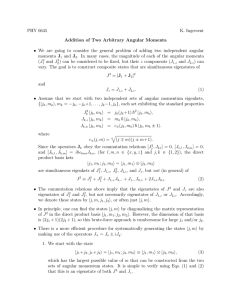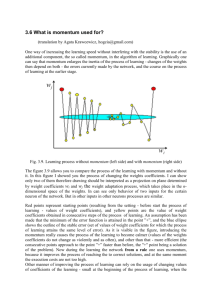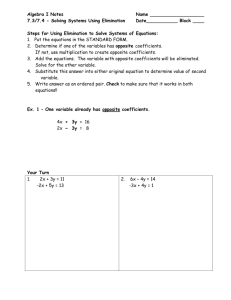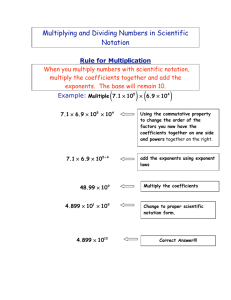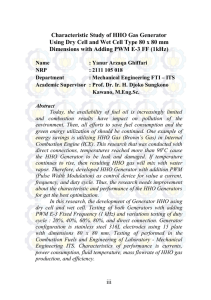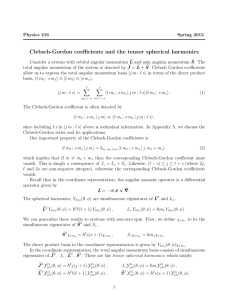here
advertisement
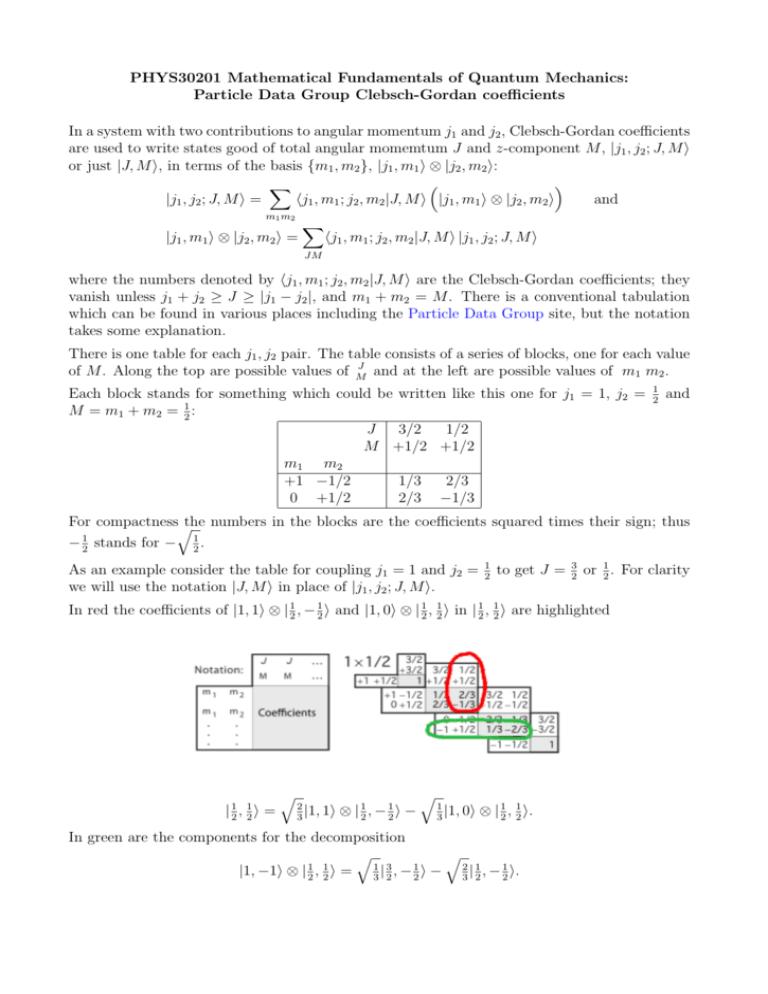
PHYS30201 Mathematical Fundamentals of Quantum Mechanics:
Particle Data Group Clebsch-Gordan coefficients
In a system with two contributions to angular momentum j1 and j2 , Clebsch-Gordan coefficients
are used to write states good of total angular momemtum J and z-component M , |j1 , j2 ; J, M i
or just |J, M i, in terms of the basis {m1 , m2 }, |j1 , m1 i ⊗ |j2 , m2 i:
X
|j1 , j2 ; J, M i =
hj1 , m1 ; j2 , m2 |J, M i |j1 , m1 i ⊗ |j2 , m2 i
and
m1 m2
|j1 , m1 i ⊗ |j2 , m2 i =
X
hj1 , m1 ; j2 , m2 |J, M i |j1 , j2 ; J, M i
JM
where the numbers denoted by hj1 , m1 ; j2 , m2 |J, M i are the Clebsch-Gordan coefficients; they
vanish unless j1 + j2 ≥ J ≥ |j1 − j2 |, and m1 + m2 = M . There is a conventional tabulation
which can be found in various places including the Particle Data Group site, but the notation
takes some explanation.
There is one table for each j1 , j2 pair. The table consists of a series of blocks, one for each value
J
of M . Along the top are possible values of M
and at the left are possible values of m1 m2 .
Each block stands for something which could be written like this one for j1 = 1, j2 =
M = m1 + m2 = 21 :
J
3/2
1/2
M +1/2 +1/2
m1 m2
+1 −1/2
1/3
2/3
0 +1/2
2/3 −1/3
1
2
and
For compactnessq
the numbers in the blocks are the coefficients squared times their sign; thus
1
− 2 stands for − 12 .
As an example consider the table for coupling j1 = 1 and j2 =
we will use the notation |J, M i in place of |j1 , j2 ; J, M i.
1
2
to get J =
3
2
or 21 . For clarity
In red the coefficients of |1, 1i ⊗ | 21 , − 21 i and |1, 0i ⊗ | 21 , 12 i in | 12 , 12 i are highlighted
| 12 , 12 i =
q
2
|1, 1i
3
⊗ | 21 , − 12 i −
q
1
|1, 0i
3
⊗ | 21 , 12 i.
In green are the components for the decomposition
q
q
1 3
1
1 1
|1, −1i ⊗ | 2 , 2 i = 3 | 2 , − 2 i − 23 | 21 , − 12 i.
Or for coupling j1 =
3
2
and j2 = 1:
giving for example
| 32 , − 21 i
=
q
8
15
| 23 , 12 i
⊗ |1, −1i −
q
1
15
| 23 , − 12 i
⊗ |1, 0i −
q
2
5
| 32 , − 23 i ⊗ |1, 1i
If instead one wants j1 = 1 and j2 = 32 , we use the relation
hj2 , m2 ; j1 , m1 |J, M i = (−1)J−j1 −j2 hj1 , m1 ; j2 , m2 |J, M i
Note that table of Clebsch-Gordan coefficients are given for states of j1 and j2 coupling up to
total J. But as j is a generic angular momentum, that covers s and l coupling to j, or s1 and
s2 coupling to S etc.

